Trekking Mount Kenya:
OVERVIEW
Mt Kenya, the second highest mountain in Africa, is located in the tropics and benefits from an equatorial climate. A typical day on trek is a sunny crystal-clear morning with temperatures around 25ºC in low altitude and around 10ºC as you slowly climb up. As the temperature raise, the ground warms up, heats the air and generates fog and clouds by mid-day. The wind generated by the warmth brings the clouds to the summits to slowly cover the surrounding peaks. With clouds, temperature slowly drops down and the air becomes colder. At dawn, the ground surface gets cooler and the clouds slowly recede downhill leaving the peaks uncovered. As a consequence, in high altitude, temperature easily gets under 0ºC and can drop down to -10ºC during the night. The generated winds and clouds resulting from the ground heating and cooling is called the anabatic effect and you should expect more strong winds in the morning.
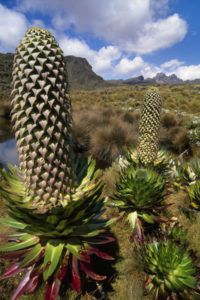
VEGETATION
Vegetation is a rich alpine and sub-alpine flora and has an incredible diversity that varies with altitude and rainfall. On the west and north side of the mountain, the bamboo forest is less dominant or in some part non-existent. Up to 3,400m the moorland zone has a great richness and diversity with astonishing varied flora. The upper alpine zone at altitude above 3,800m is still an amazing land with huge lobelia growing between the tussocks, groundsel (Senecio) and many other endemic species. In the uppermost elevations, vegetation cannot resist the cold temperature, ice and altitude and you trek through a dry alpine zone.
HISTORY
During the 16th and 17th centuries, the foothills of Mount Kenya became inhabited by various Bantu tribes including the Kikuyu, the Meru and the Embu, where the fertile soils and high rainfall suited their practice of intensive agriculture. By the 18th century the Kikuyu were the dominant tribe.
Mount Kenya was considered sacred to these tribes. To the Kikuyu, who called the mountain, Kirinyaga (meaning White Mountain), it was the home of their god, Ngai. Only tribal elders were allowed onto the mountain and the dead were buried facing the summit. The Kamba called the mountain Kee Nyaa (meaning Place of the Ostrich), from which the English name of the mountain (and the country) were probably derived. It was also sacred to the Maasai because they believe this is where the first Maasai couple descended with their cattle.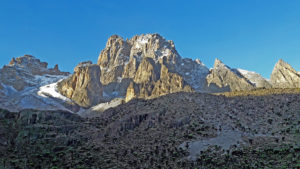
The first sighting of the mountain by a European was in 1849 by the German missionary, Ludwig Krapf, but his description of snow-capped peaks on the equator was largely dismissed until in 1883 the Scottish explorer, Joseph Thomson, confirmed Krapf’s story. A few years later, Count Samuel Teleki cut his way through the forest and reached a point above the moorland on the south-west side of the mountain.
Batian was climbed in 1899 by the British mountaineer, Halford Mackinder, the first man known to have been there. Mackinder named the three peaks after Maasai leaders. Nelion, the second highest peak but a much harder climb, was not ascended until 1929 by Eric Shipton.
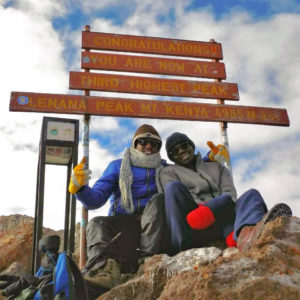
When is the best time for climbing Mt Kenya?
You can climb Mount Kenya year round. However, the best time to climb Mount Kenya is from December through early March, and from July to early October, as these two periods are dry. During the rainy periods, falling in April/May and November, you can also climb Mount Kenya, but there may be a risk of higher rainfall. Note that good weather on Mount Kenya is not a guarantee and is highly unpredictable on the mountain all year long, so keep your equipment in order and always be prepared for rain and cold without any prior warning.
What does climbing Mt Kenya look like?
Thanks to videographer Jasper Epsom you can experience a bit of what he and his mother Maria felt when hiking the mountain. The route they enjoyed was up Chogoria and down Sirimon. Don’t forget to leave a comment on YouTube for Jasper!
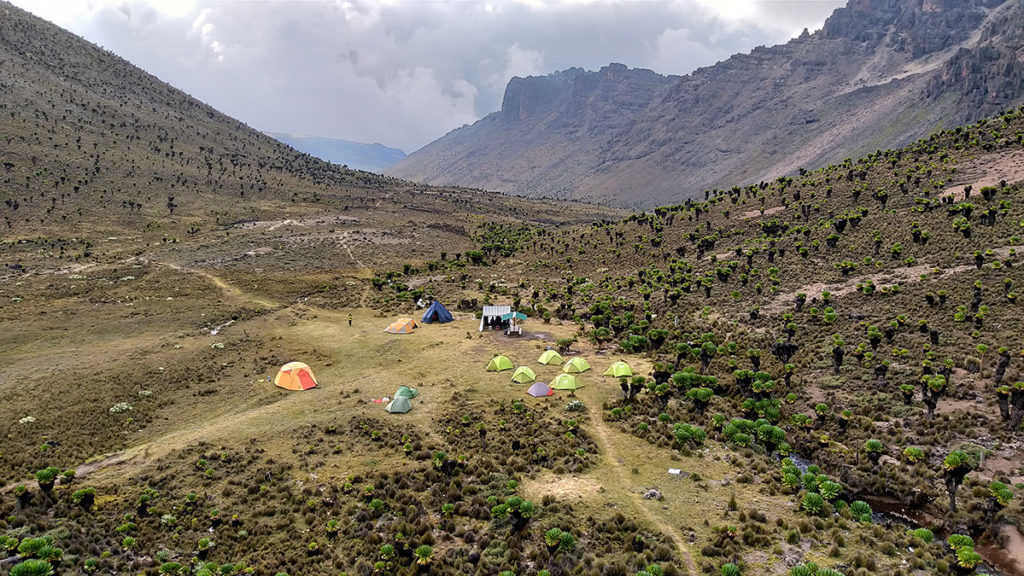
5 DAYS SIRIMON DOWN CHOGORIA
Mt Kenya’s Hidden Jewel
The least used of the three principal routes. Because Sirimon is on the dry side of the mountain it offers some of the finest forest walking to be had on any tropical mountain.
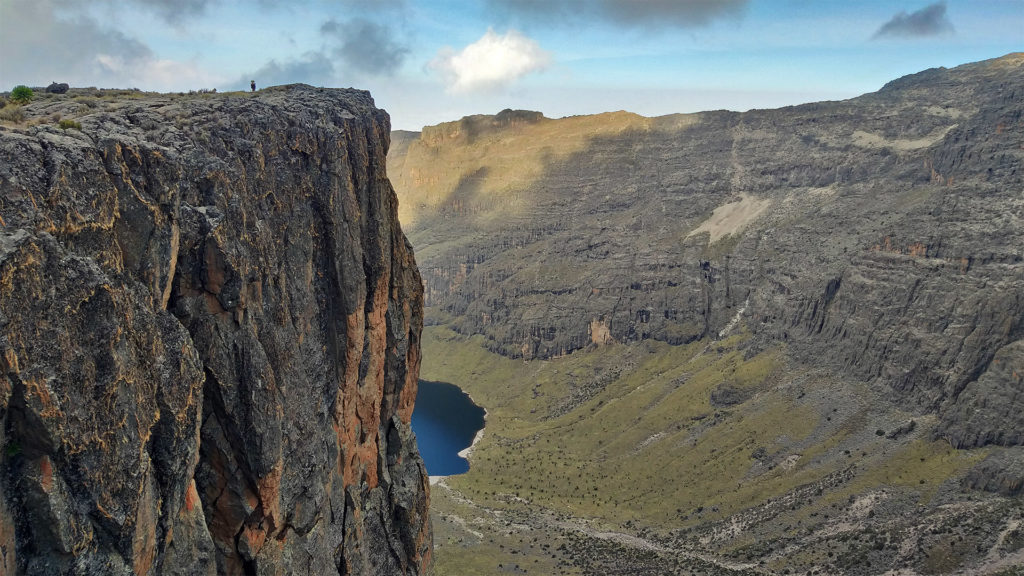
5 DAYS CHOGORIA DOWN SIRIMON
Our Preferred My Kenya Route Blending Scenery and Success
You will discover wonderful scenery and experience solitude and peace along the trail, passing two beautiful mountain lakes. This longer and more gradual route is better for acclimatization allowing for an enjoyable high altitude trek.
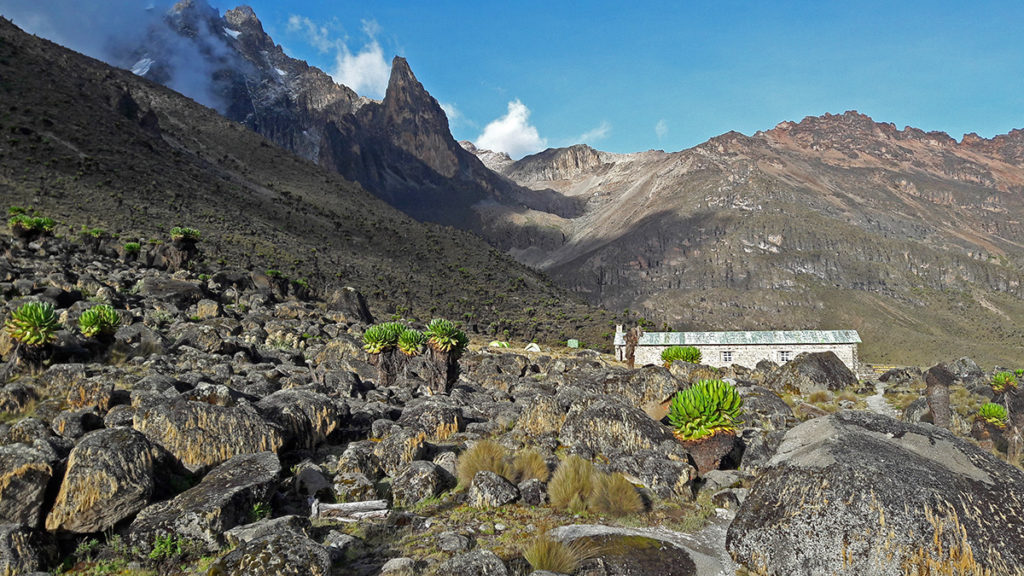
5 DAYS NARU-MORU OUT SIRIMON
The Quickest and Most Popular Route up Mt Kenya
The steepest ascent for any hike to the top of Mount Kenya. The trail takes you through the Teleki Valley providing outstanding views of Batian and Nelion.